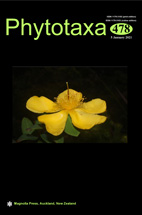Abstract
Pyracantha is naturally distributed from East Asia to the southeastern Europe regions, and seven species, including five endemic species, were recorded in China. Taxonomic problems within the genus persist, in which the identity of Pyracantha crenulata complex is not clear when referring to the existing species dichotomous key. P. crenulata complex contains three species: P. loureiroi, P. crenulata and P. fortuneana. Such incident might be due to the lack of proper analysis and evaluation of the characters at the population level when first described. To solve this problem, we sampled 48 populations of P. crenulata, examined 278 sheets of herbarium specimens, and conducted principal coordinate analysis (PCoA) on the morphological variations across different populations. Our findings indicated that P. crenulata complex does not display distinct, separated groups based on the morphological characteristics described in the existing species description, the shape of leaf, leaf margin, leaf apices and widest position of leaf are not distinct features for species delimitation in P. crenulata complex. As a result, we proposed that the P. crenulata complex should be recognized as a single species named P. crenulata.

